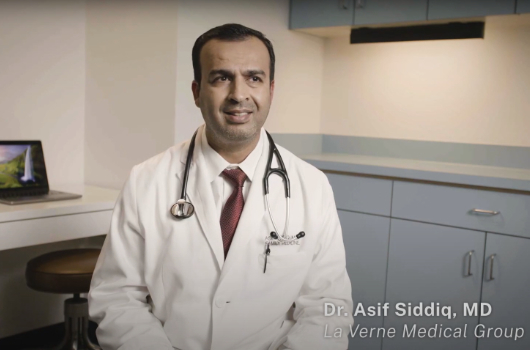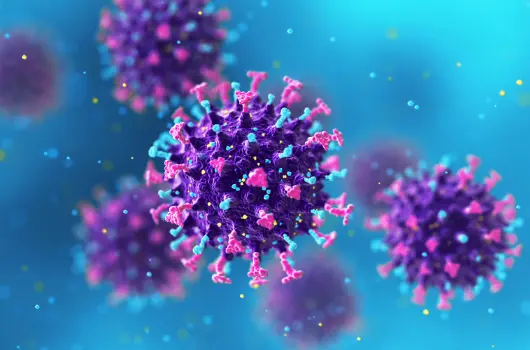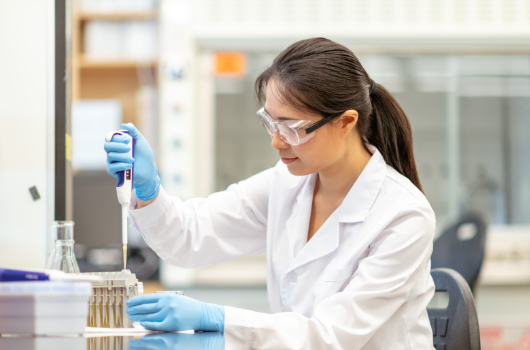Clinical Study
PCR Testing for STIs: Revolutionizing Diagnostics and Treatment

HealthTrackRx • July 12, 2024
Sexually transmitted infections (STIs) represent a significant public health challenge worldwide, with millions of new infections occurring annually. Accurate and fast diagnosis is critical for effective treatment, prevention of transmission, and overall sexual health. Polymerase Chain Reaction (PCR) testing has emerged as a revolutionary advantage in diagnosing STIs, offering new advantages in speed, accuracy, and comprehensiveness.
What is PCR Testing?
PCR testing is a molecular diagnostic technique that amplifies specific DNA or RNA sequences of pathogens, making it possible to detect even the smallest quantities of pathogens in a sample. Due to its speed, sensitivity, and specificity, PCR has become a cornerstone of modern diagnostics, most notably for respiratory infections.
Speed of Results
One of the primary advantages of PCR testing over traditional methods, such as culture, is the speed at which results can be obtained. Traditional culture methods can take several days to weeks, as pathogens need time to grow and be identified. In contrast, PCR testing produces results in under 24 hours. This rapid turnaround time is crucial for STIs, allowing for quicker diagnosis and treatment, reducing the risk of further transmission and/or complications.
For instance, rapid PCR testing can identify many common STI’s like chlamydia, trichomoniasis, and gonorrhea much faster than traditional culture methods, enabling healthcare providers to initiate appropriate treatments swiftly. For instance, rapid PCR testing can identify many common STIs like chlamydia, trichomoniasis, and gonorrhea much faster than traditional culture methods, enabling healthcare providers to initiate appropriate treatments swiftly. This is especially important in pregnant women, where delays in treatment could result in transmission to the child, leading to severe complications during the infant’s first few weeks of life.
Accuracy of Test Results
PCR testing is known for its high accuracy. Traditional diagnostic methods can sometimes yield false-negative results, especially if the pathogen is present in low quantities or if the sample collection wasn’t performed well enough. PCR, however, can detect even small amounts of pathogens, significantly reducing the likelihood of false negatives.
Additionally, PCR testing has a high specificity, meaning it is unlikely to produce false-positive results. This accuracy is vital for STIs, as misdiagnosis can lead to inappropriate treatment and over-prescribing of antibiotics, which can decrease the antibiotic response to future infections.
Range of Detection
It’s common for providers to identify a likely infection but can’t tell with assurance what type of infection. PCR testing also allows for the simultaneous detection of multiple pathogens in a single sample. This capability is particularly beneficial in STI diagnostics, where multiple infections can be common amongst sexually active patients. For example, a single PCR test can screen for chlamydia, gonorrhea, mycoplasma genitalium, and trichomoniasis, providing a comprehensive diagnostic picture to guide effective treatment strategies. On the other hand, it is extremely challenging to culture these pathogens, leading PCR to be the standard of care for their detection.
Conclusion
PCR testing represents a significant advancement in the diagnosis of STIs, offering speed, accuracy, sensitivity, and a broad detection range. These attributes make it a superior choice compared to traditional methods, particularly in the context of STIs, where fast and precise diagnosis is essential for effective treatment, prevention, and preventing the transmission of pathogens. By embracing PCR testing, healthcare providers can ensure patients receive the best possible care, ultimately improving sexual health outcomes globally.
Related Articles and White papers

HealthTrackRx • July 12, 2024
Sexually transmitted infections (STIs) represent a significant public health challenge worldwide, with millions of new infections occurring annually. Accurate and fast diagnosis is critical for effective treatment, prevention of transmission, and overall sexual health. Polymerase Chain Reaction (PCR) testing has emerged as a revolutionary advantage in diagnosing STIs, offering new advantages in speed, accuracy, and comprehensiveness.
What is PCR Testing?
PCR testing is a molecular diagnostic technique that amplifies specific DNA or RNA sequences of pathogens, making it possible to detect even the smallest quantities of pathogens in a sample. Due to its speed, sensitivity, and specificity, PCR has become a cornerstone of modern diagnostics, most notably for respiratory infections.
Speed of Results
One of the primary advantages of PCR testing over traditional methods, such as culture, is the speed at which results can be obtained. Traditional culture methods can take several days to weeks, as pathogens need time to grow and be identified. In contrast, PCR testing produces results in under 24 hours. This rapid turnaround time is crucial for STIs, allowing for quicker diagnosis and treatment, reducing the risk of further transmission and/or complications.
For instance, rapid PCR testing can identify many common STI’s like chlamydia, trichomoniasis, and gonorrhea much faster than traditional culture methods, enabling healthcare providers to initiate appropriate treatments swiftly. For instance, rapid PCR testing can identify many common STIs like chlamydia, trichomoniasis, and gonorrhea much faster than traditional culture methods, enabling healthcare providers to initiate appropriate treatments swiftly. This is especially important in pregnant women, where delays in treatment could result in transmission to the child, leading to severe complications during the infant’s first few weeks of life.
Accuracy of Test Results
PCR testing is known for its high accuracy. Traditional diagnostic methods can sometimes yield false-negative results, especially if the pathogen is present in low quantities or if the sample collection wasn’t performed well enough. PCR, however, can detect even small amounts of pathogens, significantly reducing the likelihood of false negatives.
Additionally, PCR testing has a high specificity, meaning it is unlikely to produce false-positive results. This accuracy is vital for STIs, as misdiagnosis can lead to inappropriate treatment and over-prescribing of antibiotics, which can decrease the antibiotic response to future infections.
Range of Detection
It’s common for providers to identify a likely infection but can’t tell with assurance what type of infection. PCR testing also allows for the simultaneous detection of multiple pathogens in a single sample. This capability is particularly beneficial in STI diagnostics, where multiple infections can be common amongst sexually active patients. For example, a single PCR test can screen for chlamydia, gonorrhea, mycoplasma genitalium, and trichomoniasis, providing a comprehensive diagnostic picture to guide effective treatment strategies. On the other hand, it is extremely challenging to culture these pathogens, leading PCR to be the standard of care for their detection.
Conclusion
PCR testing represents a significant advancement in the diagnosis of STIs, offering speed, accuracy, sensitivity, and a broad detection range. These attributes make it a superior choice compared to traditional methods, particularly in the context of STIs, where fast and precise diagnosis is essential for effective treatment, prevention, and preventing the transmission of pathogens. By embracing PCR testing, healthcare providers can ensure patients receive the best possible care, ultimately improving sexual health outcomes globally.





